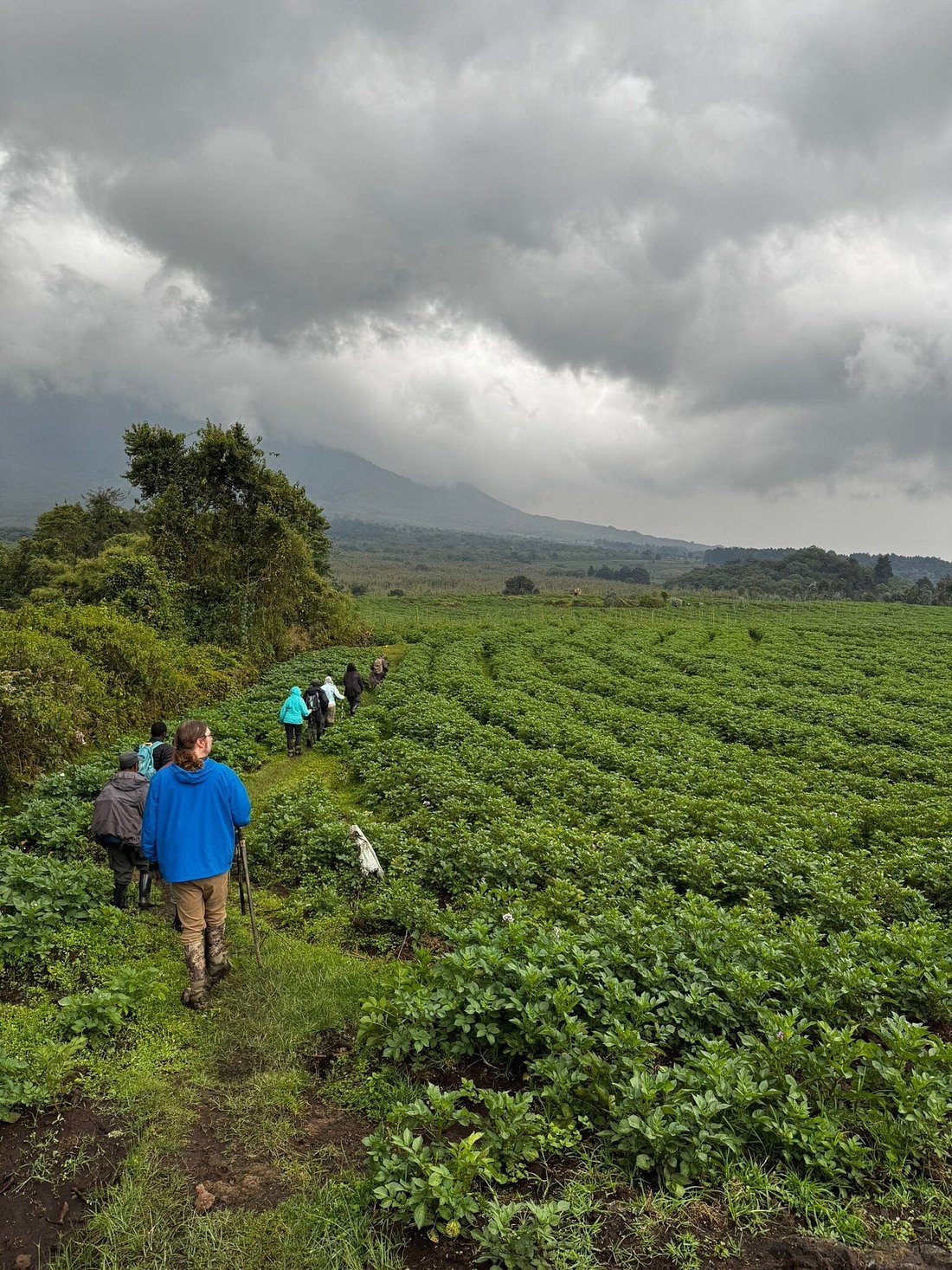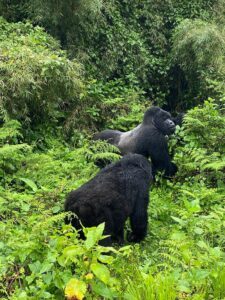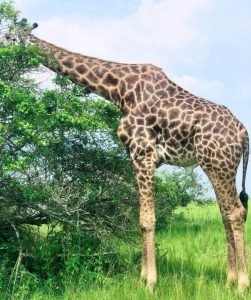Many travelers planning a safari in Rwanda or Uganda often ask one big question: Why are gorilla trekking permits so expensive? The cost—currently $1,500 per person in Rwanda and $800 per person in Uganda—can feel high at first. But the real story behind this price is powerful, inspiring, and deeply meaningful. Once you understand Why Gorilla Trekking Permits Are Expensive – Real Conservation Impact, you discover that every dollar protects endangered mountain gorillas, supports local communities, and sustains long-term conservation success. The permit is not just a ticket—it is a direct investment in the future of an entire species.
This blog explains Why Gorilla Trekking Permits Are Expensive – Real Conservation Impact, where the money goes, how gorilla populations recovered from near extinction, and how tourism protects forests, rangers, and the local families who live closest to these magnificent animals.
Understanding Why Gorilla Trekking Permits Are Expensive – Real Conservation Impact
Mountain gorillas are one of the world’s rarest primates. Only about 1,000 remain on earth, all found in Rwanda, Uganda, and the Democratic Republic of Congo. Unlike other animals, mountain gorillas cannot survive in captivity—their only future is in the wild. Protecting them requires major financial investment, round-the-clock monitoring, veterinary care, anti-poaching patrols, scientific research, community sharing, and habitat protection.
When visitors ask Why Gorilla Trekking Permits Are Expensive – Real Conservation Impact, the answer is simple: without this system, mountain gorillas would likely disappear forever.
Where Does the Money From Gorilla Permits Go?
The permit fees are divided into essential conservation programs. Every person who books a gorilla trek becomes a direct part of saving gorillas. Here is how the funds are used:
1. Anti-Poaching and Ranger Salaries
Rangers patrol the forest every single day to remove snares, track gorilla families, and prevent illegal hunting. Their salaries, equipment, and field training are funded by gorilla permits. Without these rangers, poachers would easily enter the forest, and gorilla numbers would drop again.
2. Veterinary Care and Gorilla Doctors
Mountain gorillas sometimes suffer from wounds, traps, respiratory infections, or injuries from fights. Specialized wildlife veterinarians—famously known as the Gorilla Doctors—monitor families and provide medical treatment when necessary. This is a major reason populations are growing again.
3. Habitat Protection
Forests are constantly at risk from agriculture, illegal mining, and settlement. Gorilla permit revenue helps governments expand protected land and manage national parks. In Rwanda, large areas of the Volcanoes National Park have been restored and fenced, making the forest safer than ever.
4. Community Benefit Programs
One of the strongest answers to Why Gorilla Trekking Permits Are Expensive – Real Conservation Impact is community involvement. In Rwanda, 10% of gorilla tourism revenue is shared directly with surrounding communities. The money builds:
-
Schools
-
Clinics
-
Roads
-
Water projects
-
Small business programs
-
Cultural centers
Because local people gain real benefits from the park, they become conservation partners instead of poachers.
5. Long-Term Scientific Research
Mountain gorillas are still endangered. Scientists and primatologists conduct daily research to understand behavior, genetics, breeding, and family structures. Research provides information that shapes modern conservation strategies.
Why Gorilla Trekking Permits Are Expensive – Real Conservation Impact on Local Communities
Before tourism, nearby villages lived in poverty and used the forest for survival—firewood, farming land, honey, and charcoal. Today, gorilla tourism transforms these communities. Thousands of local people are employed as:
-
Rangers
-
Porters
-
Guides
-
Drivers
-
Lodge workers
-
Farmers supplying food
-
Artisans making souvenirs
Every permit helps families earn income and choose conservation instead of poaching.
Why Are Gorilla Permit Numbers Limited?
Unlike safaris where hundreds of tourists can view animals from a distance, gorillas are extremely sensitive to human presence. To protect them:
Only 8 tourists can visit each gorilla family per day
Visits last only 1 hour
No touching, no feeding, no flash
Sick tourists cannot enter the park
By limiting numbers, the experience remains safe for gorillas and exclusive for tourists. If more tourists were allowed, gorillas could become stressed, aggressive, or exposed to disease.
Fewer tourists = higher price.
Higher price = stronger conservation.
Why Gorilla Trekking Permits Are Expensive – Real Conservation Impact on Gorilla Population Growth
In the 1980s, mountain gorillas were nearly extinct—only about 250 individuals survived in the Virunga region. Today, thanks to tourism, they are the only great ape population on earth that is increasing. This is one of conservation’s greatest success stories.
Permit revenue funded:
Anti-poaching patrols
Veterinary care
Community programs
Gorilla monitoring
Forest protection
This is the real reason Why Gorilla Trekking Permits Are Expensive – Real Conservation Impact matters. Without these funds, gorillas might disappear just like the northern white rhino.
What Travelers Experience When They Pay for a Permit
When travelers purchase a gorilla permit, they don’t just watch gorillas—they become part of history. They help:
-
Protect a critically endangered species
-
Support rural communities
-
Fund conservation for future generations
-
Encourage governments to maintain protected forests
Your permit becomes a conservation donation disguised as a once-in-a-lifetime adventure.
Comparing Gorilla Permits to Other Wildlife Experiences
Some travelers compare gorilla permits to normal safari park fees. But gorilla conservation is very different.
| Wildlife Type | Population Size | Survival Needs | Tourism Rules |
|---|---|---|---|
| Lions, Elephants, Zebras | Hundreds of thousands | Large savannah areas, no daily monitoring | Unlimited viewing |
| Mountain Gorillas | Only ~1,000 worldwide | Human monitoring, veterinary care, protected habitat | Strict daily limits |
Gorillas require more staff, equipment, and constant protection than almost any other animal species on Earth.
Why Gorilla Trekking Permits Are Expensive – Real Conservation Impact on Rwanda
Rwanda is now a world leader in sustainable tourism. Revenue from gorilla permits helped:
Build modern tourism infrastructure
Create world-class lodges
Improve roads and security
Fund education for children
Support environmentally friendly growth
This is why Rwanda is known as Africa’s cleanest, safest, and most organized gorilla trekking destination.
Gorilla Conservation Inspires Global Support
Tourism success in Rwanda has inspired filmmakers, wildlife organizations, donors, and celebrities to support conservation. The famous story of Dian Fossey and the Ellen DeGeneres Campus of the Dian Fossey Gorilla Fund is a perfect example of how tourism and science work together to save gorillas.
What If Gorilla Permits Were Cheap?
If gorilla permits were cheap, two dangerous outcomes would happen:
-
Too many tourists would enter the forest
-
Conservation funding would collapse
Without money, rangers stop patrolling, vets stop treating gorillas, poachers return, and forests shrink.
Expensive permits are not a luxury—they are protection.
Why Gorilla Trekking Permits Are Expensive – Real Conservation Impact for Future Generations
The goal is not just to protect gorillas today, but to make sure future generations — your children and grandchildren — can meet them too. Tourism creates a financial reason for governments and communities to defend gorillas forever.
Final Thoughts: Why Gorilla Trekking Permits Are Expensive – Real Conservation Impact
One permit does more than give you one hour with gorillas. It pays for:
Park rangers
Gorilla doctors
Community development
Anti-poaching patrols
Habitat protection
Research
Education
Local employment
This is the real explanation behind Why Gorilla Trekking Permits Are Expensive – Real Conservation Impact. When you trek with gorillas, you become a conservation hero. You save a species that cannot speak for itself.




